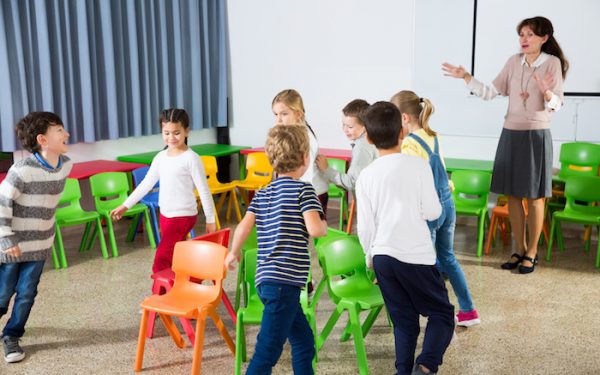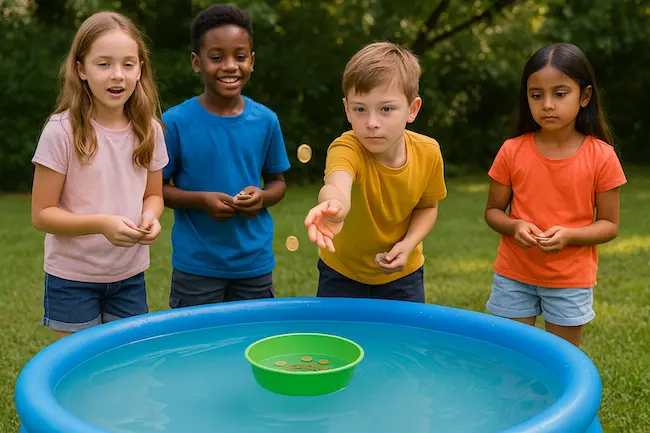Hot and Cold game – A no-prep party favorite for kids
Among the easiest party games for kids, the Hot and Cold game is a timeless hit that sparks laughter, movement, and observation—all with zero prep. This classic guessing game challenges children to find a hidden object using only temperature clues like “hotter” or “colder.” Whether you’re hosting an indoor birthday party or planning outdoor play in the backyard, this versatile game adapts to any space and keeps everyone engaged.
Game essentials and setup
You won’t need any materials or setup for this game—just some energetic kids and a safe place to play. Here’s what to know before you begin:
- Number of players: 5 or more
- Recommended ages: From 5 years old
- Supplies needed: None
- Ideal setting: Indoors or outdoors
- Play time: About 15 minutes
This simplicity makes Hot and Cold one of the best low-effort party games to organize quickly.
How to play the Hot and Cold game
The rules are simple, but the fun lies in listening, thinking, and reacting fast. Here’s how it works:
1. Choose the first “chooser”:
Designate one player to secretly select an object within the play area. This object becomes the hidden target.
2. Give temperature clues:
The chooser stays in place and guides the rest of the players using only temperature-related words.
- If players move closer, they hear “hot,” “warmer,” or “burning.”
- If players move farther, the chooser says “cold,” “colder,” or “freezing.”
3. Find the hidden object:
Players explore the area and listen carefully to the clues until someone finds the object. That player becomes the new chooser for the next round.
4. Keep the game going:
You can rotate choosers each round to keep everyone involved, or add twists to make the game more strategic or silly.
Encourage critical thinking and teamwork with our interactive Whodunit mystery game for children.
Game variations to add challenge
Looking to mix things up? Try these fun twists to keep your party guests on their toes:
- Limited Guesses: Players get just a few chances to find the object—perfect for adding suspense.
- Blindfold Mode: A blindfolded player searches while others guide them with temperature clues.
- Team Challenge: Teams take turns hiding and finding the object; the fastest team wins.
- Reverse Rules: Replace “hot” and “cold” with unrelated words or sounds for a tricky variation.
- Outdoor Explorer: Expand your search zone to a yard or park for extra adventure.
These adaptations make Hot and Cold a great game for different group sizes, energy levels, and environments.
Engage kids in a clever guessing game with the Killer Handshakes activity, perfect for groups.
Why Hot and Cold is more than just fun
This engaging guessing game offers multiple benefits for kids’ development while keeping the fun front and center. Here’s what children gain while playing:
- Spatial awareness: Learning to navigate based on abstract clues
- Logical thinking: Interpreting directional cues and adapting quickly
- Vocabulary building: Using and understanding descriptive words
- Listening and communication: Following verbal guidance precisely
- Observation skills: Staying focused on surroundings
- Patience and focus: Staying attentive until the object is found
- Social interaction: Cooperating, taking turns, and respecting others’ roles
- Adaptability: Adjusting strategies with each new variation
By combining all these elements into one simple game, Hot and Cold becomes a valuable tool for play-based learning.
Break the ice and foster connections with our engaging Guess Who Icebreaker Game, perfect for group settings.
FAQ – Hot and Cold party game for kids
- Can this game be played with young children?
Yes! The simple rules and flexible pacing make it ideal even for preschoolers, as long as the area is safe and clear. - Is this game good for classrooms?
Absolutely. It’s perfect for brain breaks, recess, or indoor play on rainy days. - What if you don’t have space?
You can adjust the game to fit smaller rooms by narrowing the play zone or choosing easy-to-reach hiding spots.
Want to take the excitement even further? Explore our wide range of printable games for kids including escape rooms, mystery challenges, and treasure hunts. Each ready-to-play kit is packed with fun puzzles and immersive stories—perfect for birthdays, holidays, or cozy afternoons at home.






